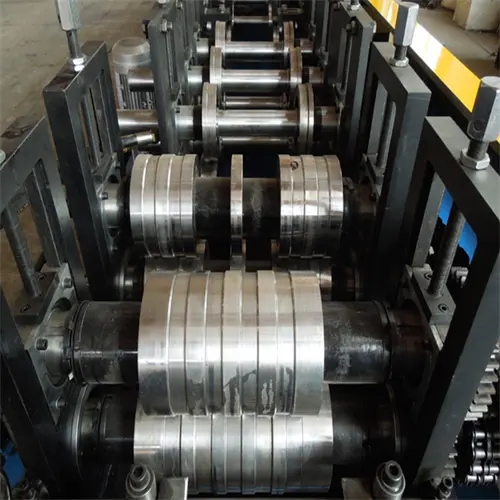
Understanding the Strut Channel Roll Forming Machine
In the realm of metal fabrication, the strut channel roll forming machine stands out as a pivotal piece of equipment, especially when it comes to producing strut channels used in various construction and industrial applications. Strut channels, which are often made from materials like steel or aluminum, serve as essential structural support systems in building frameworks, providing stability and versatility for various installation tasks.
What is a Roll Forming Machine?
At its core, a roll forming machine is designed to transform metal sheets into specific shapes through a continuous bending process. Strut channel roll forming machines are specially tailored to create the U-shaped channels that are widely used in mounting systems, electrical pathways, and HVAC systems. The primary function of these machines is to take flat metal coils and transform them into consistently shaped profiles, which can then be cut to desired lengths.
The Roll Forming Process
The roll forming process begins with feeding a flat sheet or coil of metal into the machine. The metal passes through a series of paired rollers, each set progressively alters the shape of the material. By the time the metal exits the machine, it has been formed into the strut channel profile. One of the key benefits of this process is that it allows for high production rates, maintaining a consistent quality while minimizing waste.
The precision of the design ensures that the strut channels have the necessary thickness and strength, which are critical for the structural integrity of the applications they are used in. Additionally, modern roll forming machines can incorporate advanced technology such as servo motors and PLC (Programmable Logic Controller) systems, enabling greater control over the speed and accuracy of the forming process.
Applications of Strut Channels
Strut channels are widely utilized in various industries, including construction, telecommunications, and manufacturing. Their primary applications include
1. Support Systems Strut channels are commonly used as support brackets for piping, ductwork, and electrical conduits. They provide a reliable framework that can hold heavy loads while allowing for easy adjustments and modifications.

2. Modular Systems In modular construction, strut channels facilitate the assembly and disassembly of structures, making them ideal for temporary installations or spaces that may require frequent reconfiguration.
3. Racking Systems In warehouses and industrial settings, these channels can be used to build racking systems that optimize space and enhance organization.
Advantages of Using Strut Channel Roll Forming Machines
Investing in a strut channel roll forming machine brings several advantages
- Cost-Effectiveness Mass production using roll forming decreases the cost per unit. The efficiency of the process leads to significant savings over time. - Quality Consistency The automated process ensures each channel produced is uniform in size and shape, minimizing variances that can occur with manual processes.
- Customization Many roll forming machines allow for customization of the channel design, accommodating specific requirements dictated by the project at hand.
- Reduced Waste The continuous nature of roll forming maximizes raw material usage, reducing scrap metal and contributing to sustainability.
Conclusion
The strut channel roll forming machine plays a crucial role in the modern manufacturing landscape, providing essential components that support various construction and industrial needs. Its ability to produce high-quality, precise strut channels at scale not only exemplifies the efficiency of modern metalworking techniques but also demonstrates the importance of this technology in building safer and more adaptable infrastructures. As industries continue to evolve, the relevance of these machines is set to grow, shaping the frameworks of our built environment.